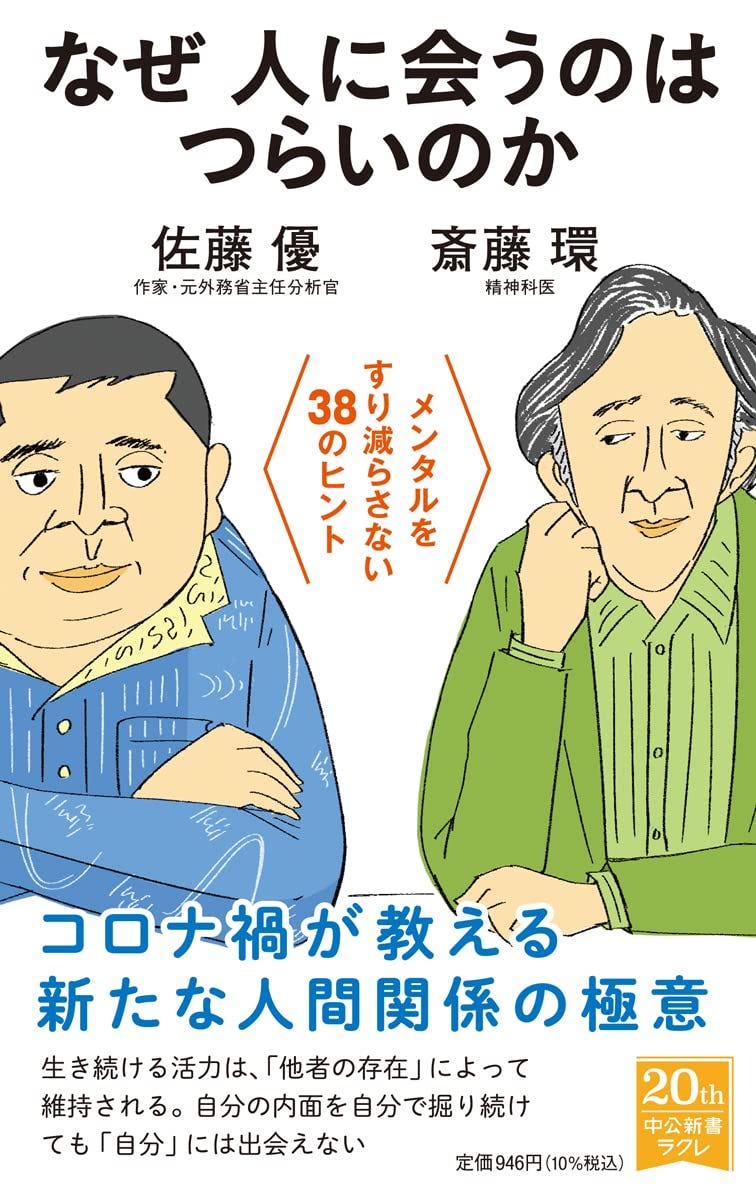Have you ever felt drained or uneasy before meeting someone, even though you know you’ll enjoy their company once you’re together?
Maybe you find yourself dreading the meetup, even with close friends, or feeling a bit tense or reluctant to follow through on plans. While the time spent together might be enjoyable, there’s often a sense of exhaustion that creeps in, leaving you wondering why the anticipation feels so heavy.
If I’m honest, I experience this quite often myself.
What is it about human interaction — the act of being present with someone, engaging face-to-face — that carries such unique value?
And should we even meet in person at all?
These abstract, philosophical questions are explored in Why Is Meeting People So Difficult? by psychiatrist Tamaki Saitō, known for his work with social withdrawal, and former diplomat and author Masaru Sato.
Together, they delve into the complexities of human connection and offer insights that might change the way you think about meeting others.

The Book in 3 Sentences
- Why Is Meeting People So Difficult? offers practical advice for navigating social interactions while protecting your mental well-being.
- The book explores common struggles with social anxiety and provides 38 tips to manage emotions, set boundaries, and avoid emotional burnout in social settings.
- It emphasizes the importance of self-awareness, understanding personal limits, and adopting strategies to foster healthier, less stressful relationships.
Impressions
How Did I Discover It?
I discovered this book while browsing through my mother’s bookshelf during a visit a couple of weekends ago. I often borrow a few books to take home and read, and this was one of them from that visit. I liked that the book is in a dialogue format, which allowed me to approach the content from a third-person perspective, making it easier to engage with.
Who Should Read It?
I would recommend this book to anyone who struggles with social anxiety, feels overwhelmed in social situations, or experiences burnout from excessive social interactions.
It’s also helpful for individuals looking to improve their mental health by setting boundaries and practicing self-care in their relationships.
Also, it’s insightful for those interested in understanding how social dynamics impact their emotional well-being and seeking practical tools for managing these challenges.
How the Book Changed Me
- Encouraging Openness Toward Mental Health: The book highlights how Tokushima’s Kamigata Town’s high mental health service usage and low suicide rate stem from a cultural openness to seeking help, exemplified by the local proverb “病、市に出せ” (“If there’s a problem, make it public and ask for help”). This perspective made me rethink the barriers to mental health discussions in my community, particularly in Japan, where societal pressures sometimes make it difficult to seek help.
- Reframing Face-to-Face Interactions: The author’s exploration of the “violence” in face-to-face interactions helped me better understand the discomfort I feel in social situations. The idea that these interactions are not purely negative but serve a meaningful purpose made me more willing to engage, despite the discomfort, and gave me a new perspective on the nature of human connection. He further explores this topic in his blog.
- Reconsidering Self-Worth: The section on marginalized men who feel their lives lack meaning due to societal pressures encouraged me to question harmful societal norms that link self-worth with productivity and success. This reflection made me more aware of the danger of perpetuating a society that devalues people based on traditional metrics and reinforced my commitment to creating more inclusive, accepting environments for everyone.
My Top 3 Quotes
- “‘Desire is the desire of others’ (…) — Desire and ambition may seem like they naturally arise from within oneself, but in reality, they have their origins in others, and cannot be sustained without continuous supply from others.” (「欲望は他者の欲望である」(中略)欲望や意欲というものは、自分の中から自然に芽生えるもののように見えて、実は他者が起源で、他者から供給し続けてもらわないと維持できない。) — p. 105
- “I understand that the pain of meeting people comes from the ‘violence’ inherent in it. However, this ‘violence’ has meaning.” (人に会うのに苦痛を感じるのは、そこに「暴力性」があるからだと理解する。しかし、その「暴力性」には意味がある。) — p.115
- “Boldly escape from violence that exceeds your tolerance level. If necessary, engage with others while being aware of the ‘violence’ in meeting them.” (許容レベルを超えた暴力からは堂々と逃げる。必要だと思ったら、「会うことの暴力性」を自覚したうえで他人と関わっていく。) — p.234
After reading this book, I found myself approaching human interactions with a more positive mindset, and I hope that you, too, can embrace your connections with others in a more mindful and open way.